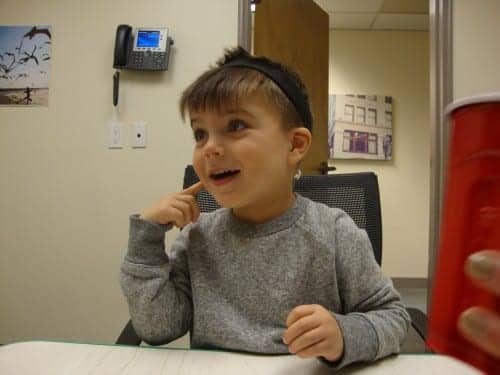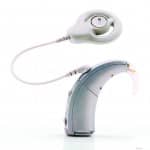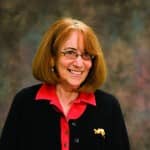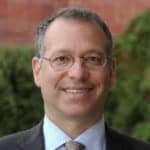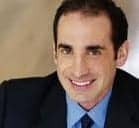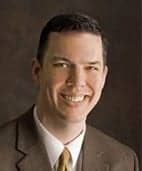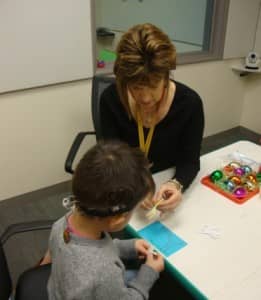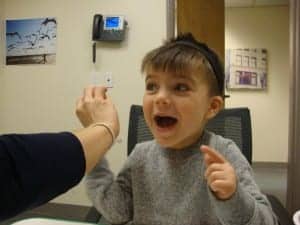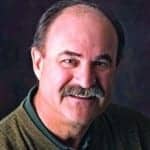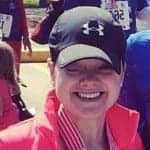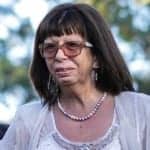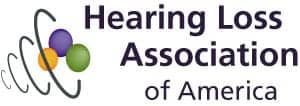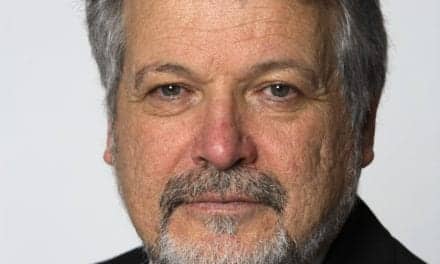According to many users of the ABI, or auditory brainstem implant, the device is a miracle. It was FDA-approved in October 2000 for use in patients 12 years and older with neurofibromatosis type II (NF2), a hereditary disease characterized by non-malignant brain tumors (called acoustic neuromas or vestibular schwannomas) that grow along the hearing nerves of both ears—tumors whose growth and removal typically leads to deafness for the patient.
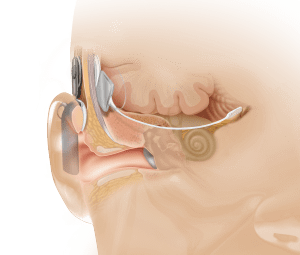
Anatomical view of ABI placement, which bypasses the cochlea or inner ear (photo courtesy of Cochlear Inc).
A hearing aid or cochlear implant can only benefit people whose hearing nerves and inner ears (cochleae) are intact and fully functioning. The innovation of the ABI—developed in the 1970s by Drs William F. House and William E. Hitselberger—is its internal electrode, which is designed to bypass the cochleae and hearing nerves altogether, delivering sound stimulation directly to the hearing center in the brainstem.
Since its development, experts have explored how this device might help other, non-NF2 patients with deafness from non-functional hearing nerves or cochleae. In recent years, ABI studies in non-NF2 patients have been conducted primarily by Vittorio Colletti, MD, whose clinical ABI program in Verona, Italy has included a number of pediatric patients.
In early 2014, ABI experts in Los Angeles initiated a multicenter collaborative trial between Keck Medicine of the University of Southern California (USC), Children’s Hospital Los Angeles (CHLA), and Drs Eric Wilkinson and Marc Schwartz of House Clinic and Huntington Medical Research Institutes (HMRI). Experts at these centers comprise the Los Angeles Pediatric ABI Team, which receives NIH funding for the FDA-approved ABI clinical trial of young children with non-NF2 deafness.
This new trial is an opportunity to learn more about the ABI and its use for a new population of patients, and also to learn more about the auditory experiences of the patients themselves. How do patients experience hearing through this auditory device, and do the experts treating these non-NF2 patients use different approaches?
Efficacy of the ABI in Younger Patients
At the USC-CHLA Center for Childhood Communication (C3) of Keck Medicine of USC in Los Angeles, two of the investigators on the ABI trial now underway are research audiologist Laurie Eisenberg, PhD, and scientist Robert V. Shannon, PhD. The patients they are recruiting are young non-NF2 children who might benefit from the ABI device due to a missing hearing nerve or inner ear (cochlea). The size of this population is estimated to be approximately 30 children in the United States per year, and possibly up to 100 per year.
However, Eisenberg and Shannon explained, some of the children in that estimate might not gain the greatest benefit from the ABI device, and would possibly not be candidates for the current ABI trial due to stringent exclusion criteria. For example, kids who have cognitive delays or developmental challenges are not likely to meet the study criteria since they would not gain as much benefit. Why? Because to gain auditory and cognitive benefits from the ABI, the patient must actively participate in a rigorous follow-up program of exercises and testing methods where demonstrated patient understanding and feedback is key.
This ABI study is enrolling kids ages 2 through 6 years old. How do these young children respond to electrical stimulation, and can they provide valuable feedback? The team explained that experienced pediatric audiologists are able detect even the subtlest of responses in children who are deaf. The C3 clinical team includes pediatric audiologists Margaret Winter, MS, and Jamie Glater, AuD, speech-language pathologist Dianne Hammes Ganguly, MA, and educational specialist Debra Schrader, BS, as well as research audiologist Amy Martinez, MA, and Eisenberg herself. This team has been conducting evaluations in children with hearing loss for many years, and has the expertise to assess infants and toddlers. In fact, Eisenberg hopes the current ABI trial might be extended to allow them to include even younger patients.
“We’re so encouraged by our first four ABI patient surgeries in this trial that the team is discussing the possibility of reducing the entry age to 18 months old,” said Eisenberg. “The earlier that patients receive sound through the ABI, the more likely it is that they’ll gain benefits, so why make them wait if the surgery and programming are shown to be safe and efficacious to our first group of patients? This change in protocol, however, would need to be approved by our Data Safety Monitoring Board and the FDA.”
Safety of the ABI in Younger Patients
There are other considerations when implanting younger patients. “The risk of surgery must be considered, of course, particularly for the younger patients,” he said. “This is brain surgery, after all. Also, we know that the brainstem continues to grow until about age 2, so implanting a patient younger than that could create issues with precise placement or positioning of the device’s electrode on the brainstem.”
The investigative team for this trial, which includes surgeons Mark D. Krieger, MD, of Children’s Hospital Los Angeles (CHLA) and USC, and Marc Schwartz, MD, and Eric P. Wilkinson, MD, both physicians at House Clinic and researchers at HMRI, considered pediatric issues such as head growth, brainstem growth and development, special anesthesia methods and techniques, and behavioral/cognitive maturity. Based on these considerations, they selected age 2 as the minimum for patients.
Proving the safety and efficacy of this type of brain surgery in young children is one goal of the ABI trial. As the pediatric neurosurgeon for the trial, it is Dr Krieger’s job to ensure the overall safety of each child who is implanted with the device. Because the ABI surgeries are collaborative, involving two neurosurgeons and one otologist, Dr Krieger explained the specific roles of each specialist during an ABI surgical procedure.
“We have three very well-defined tasks to perform during these ABI surgeries, and I think our roles are very complementary,” said Dr Krieger. “It is my job to ensure careful and safe entry to that part of the brain where the ABI will be placed. I initiate the surgery and prepare the area, working alongside otologist Dr Wilkinson to create the opening for the ABI. Dr Schwartz focuses on further ensuring correct surgical placement of the ABI electrode on the brainstem. As the otologist on the surgical team, it is Dr Wilkinson’s job to oversee the placement and function of the ABI device. He tests the device with the audiology team in the operating room to make sure that it is working and delivering sound signals appropriately. If the device needs to be adjusted, Dr Wilkinson helps us make those adjustments before Dr Schwartz and I complete the surgery.”
Drs Schwartz and Wilkinson explained that their work in this study has differed from their experiences working with adult NF2 ABI patients at the House Clinic.
“A crucial point is that this is surgery on children too young to consent on their own,” said Dr Schwartz. “When we operate on adult patients with NF2, we are doing surgery primarily for tumor resection with ABI placement essentially ‘added on’ [during the same procedure]. The risk can thus be assigned to the surgery for tumor resection rather than to the ABI, which adds only a bit more risk. When we are doing pediatric ABI placement for congenital deafness, the entire surgery is being done for the ABI and thus all of the risk must be attributed to the ABI placement. This totally changes the risk-benefit calculation and, in my opinion, we must have good ABI results in the children [in this trial] to justify the risk.”
Dr Wilkinson added that, because this study involves younger patients, and because these patients are not undergoing tumor removal for NF2, the investigative team has to be even more careful about choosing candidates and which side to operate on.
“In NF2 cases, the size of the tumor and status of hearing determine whether we will attempt ABI placement on either side, and almost all NF2 patients are not going to be cochlear implant candidates, simplifying the decision making process to some degree,” said Dr Wilkinson. “In pediatric patients who have not [previously] received a cochlear implant, we have the increased challenge of deciding whether that patient’s anatomy will allow a cochlear implant to provide them benefit, or whether we should proceed directly to the ABI.”
At this stage of the research, the team is charged with ensuring that any patient who might gain similar benefit with a cochlear implant, first receive a cochlear implant as a trial before the ABI. The team is particularly concerned with providing the safest intervention with minimal risk to the patient.
A Young ABI Patient Learns to Interpret Sound
Auguste Majkoswki, age 3, was the first pediatric patient to receive the ABI device in the NIH-funded study for children under age 12. Auguste underwent a successful ABI surgery at CHLA in May 2014, and post-surgery activation of his ABI device in June 2014. Auguste and his family have returned to Keck Medicine of USC’s C3 every few months for testing and training and his results thus far have been promising.
In early March 2015, Auguste Majkowski and his mother, Sophie, returned to USC’s C3 for follow-up post-activation training with Educational Specialist Debra Schrader. As Schrader ran Auguste through his exercises, Sophie described her journey as a parent while her young child has been involved in the ABI study.
“If you had spoken to me last year, you would have found me crying,” said Sophie, a French-Canadian actress and marketing executive. “Last year was an emotional time for me, because I was so nervous about Auguste undergoing the surgery. That was the hardest part for me, but it went really well, and even though Auguste’s therapy is hard work, things are going great now.”
When asked about Auguste’s auditory and speech perception progress since his ABI device was activated in Los Angeles 9 months ago, Sophie responded, “We saw a lot of response from Auguste at the beginning, right after his ABI was activated. Then in September 2014, he seemed to hit a plateau and stopped showing progress, so when we returned to Los Angeles for our regular visit, the team adjusted his sound processor. Since they made those changes we have seen Auguste make steady progress.”
Auguste also has weekly sessions of audiology therapy at Institut Raymond-Dewar (IRD) in Montreal, Canada, and benefits from a daycare program near his home where, as part of a group of children with hearing loss, he is being taught spoken vocabulary and French sign language simultaneously. Next year Auguste will attend Deaf school, where he will focus on mastering his mother tongue, French sign language.
Sophie said that she and her husband, Christophe, were fine with Auguste being deaf, but with the ABI trial they felt they were giving him a choice. “We made this decision for him,” she said. “Where it takes him, we don’t yet know. We’ll let him show us.”
Advancing the Technology of the ABI
According to Eisenberg, it would be ideal if the team could follow ABI patients post-implantation for more than 3 years, which is the limit of the current study, so they could employ a larger battery of tests and measures that include electrophysiology studies and imaging. Additional imaging tests would allow them to follow each patient’s rate of progress post-implant.
Shannon added that more involved brain scans would help them track the brain’s plasticity over time to know if patients are detecting more sound from the auditory stimulation. “With that information, we could adjust the ABI processor to ensure the brain gets more information to advance brain potentials,” said Shannon, further explaining that brain potentials are a patient’s ability to discern the difference between vowel and consonant sounds like “sah” vs “shah,” for instance.
“Many of these kids start with a blank slate, so to speak, “ Shannon explained. “So we want to track the progression of brain processing in these young patients after they receive the ABI. That information would be crucial to our understanding of the cognitive development with sound.”
The imaging expertise of another member on the study team could help advance the technology of the ABI, as well as its efficacy. Natasha Lepore, PhD, a physicist at CHLA, examines patients’ CAT scans and other images, which helps track their rate of progress with the ABI. The measures Lepore takes post-implantation and post-activation help confirm for the ABI team that their approaches are working—from both a surgical and a technical perspective.
Adult NF2-ABI Patients
What is the degree of auditory and speech benefits that longtime ABI users have gained, and can the level of benefits they enjoy be a forecast of what the new, younger patients receiving ABIs might experience?
“We see a wide range of performance among our adult ABI patients,” said ABI audiologist Steve Otto, MA, who works with adult ABI patients at the House Clinic in Los Angeles. “And people of all performance levels really value and benefit from their ABIs.”
Otto explained that, in his many years of experience as an ABI audiologist, he has learned there is no way to predict who will have the best results. Both time and experience are major contributors to outcomes, he said, and realistic expectations are still key in patient preparation, as well as in patient use and degree of benefit from the ABI.
“I’m often struck by the disparity between actual performance and individual perception of performance among ABI patients,” said Otto. “For example, an ABI patient might score really well during testing here in the clinic—understanding a high percentage of words during the CUNY Sentence Test without any lip-reading cues—but later report some dissatisfaction with their ABI performance. On the other hand, some ABI patients who achieve lower scores during in-clinic testing may be extremely encouraged by the sounds that they are hearing, and get motivated to use the ABI regularly to overcome challenges. Some of these patients eventually understand more words without lip-reading cues and learn to enjoy music again. It never ceases to amaze me what people end up doing with their ABIs.”
An Inside Look at Individual ABI Patient Experiences
Evan Greenwood has had his ABI for 18 months now and loves it. “I have been pretty successful with my ABI,” said Greenwood, “especially compared to my expectations prior to activation of the device.”
Now 23 years old, Greenwood lost his hearing at age 21 due to NF2. He researched the ABI and reached out to Otto at House Clinic, who put him in touch with some experienced ABI users who could give him an idea of how the device worked for them. Greenwood decided to move forward with the ABI implantation during a tumor-removal surgery.
“Before losing my hearing, I was a huge social butterfly!” Greenwood said. “I loved to tell stories, make jokes, and talk on the phone. When I started to lose my hearing, I pulled back from those kinds of interactions, and that hurt. After receiving my ABI, I started to regain my confidence.”
When Greenwood’s ABI was first activated, everyone sounded like robots to him, but as time went on, the sounds he was hearing—car horns, sirens, running water—began to sound as he’d remembered them.
“The ABI isn’t natural hearing, but the more I use it, the more natural everything sounds,” he said. “Now voices sound just like I remember them, which is awesome! Also, the ABI picks up on environmental sounds, which is great for awareness.”
Greenwood carries on conversations with friends and family by hearing via the ABI, lip-reading, and expression reading. Although he can’t use the telephone, he admits to using mobile devices to text a lot, and is grateful to be living in this day and age, where texting to communicate is the norm.
When a voice is familiar to him, he can often understand the person without lip reading. “I still get excited when my wife calls to me from the other room and I can understand what she is saying,” he said.
Hollie Barousse has had her ABI for 3 years and, like Greenwood, has NF2. She opted to receive an ABI during a tumor removal surgery, after her hearing loss left her feeling heartbroken, disconnected, and isolated. Barousse hoped the ABI would allow her to rediscover an independent, active lifestyle, and possibly allow her to enjoy music again.
“My initial expectations for the ABI were low, but I needed tumor-removal surgery regardless, so I went forward with the implant as well,” said Barousse. “After activation, my quality of life improved drastically. I remember feeling very hopeful the minute I heard my first sounds on activation day.”
Barousse’s progress with the ABI was slow and often frustrating, but she remained diligent about wearing the sound processor continuously as audiologist Otto had advised. Barousse was recognizing environmental sounds within a few months—water running, the click of her car’s turn signal. Soon her speech recognition improved as well, and she was able to enjoy familiar music.
“I am now thriving in the hearing environment I was accustomed to before my hearing loss, and I can keep pace at work in a performance driven setting,” said Barousse, who works as an accountant. “I have regained self-assurance and have learned to listen more appreciatively, communicate more effectively, and to ask for and accept help. Most importantly, I’ve learned how fortunate I am to have had access to the ABI technology and the brilliant, supportive people who challenge me and encourage my success with it.”
In trying to describe how things sound through an ABI, Barousse explained that she can hear everything, but the sounds are different from the way a natural hearing person perceives them. She works to distinguish the sounds she hears—a siren vs a bird chirping, or the word “bananas” vs “pajamas.”
Over time, the sound quality with her ABI has improved, providing better speech recognition and greater musical enjoyment. She describes her current hearing experience as being close to what she remembers with her natural hearing. “At this point, my only challenges are telephone conversations, understanding speech from a distance, and new music,” said Barousse.
Linda Daniels was raising two young sons when she first considered the ABI to regain the hearing she was losing from NF2 and tumor removal surgeries. Daniels decided to wait a few years until her boys were older before getting the ABI, and ultimately went 2 years without hearing any sound at all. “I took some sign language and lip-reading classes during that time to prepare,” said Daniels, who ended up getting her ABI surgery in 2008, after her younger son went off to college.
Daniels remembers those 2 years without sound as a lonely time. “People try to tell you something and if you don’t get it right away, they stop trying,” said Daniels. “I found that to be so depressing. My hearing loss made me feel like an outsider.”
Everything changed for Daniels the day her ABI was activated. “Even when I can’t hear every word, the sounds that I do hear help so much in trying to understand what people say,” she said. An ABI user for 7-plus years, Daniels recalls how excited she was to recognize a song on the radio just after her ABI was first activated. She still faces frustrations, however, when she is in a noisy environment like a restaurant. “When the background noise is loud, then everything is just noise,” she said. “It’s like listening to the radio and being caught between stations. You can turn up the volume but you can’t always tune it in. Still, I would not trade it for anything. The ABI is my medical miracle and has made all the difference for me.”
Molly Brown received a penetrating-electrode auditory brainstem implant (PABI) in 2003 as part of a Prospective Clinical Trial of the PABI of individuals with NF2. The PABI is an extension of ABI technology, but where the ABI uses only surface electrodes on the cochlear nuclei at the brainstem, the PABI uses 8-10 penetrating microelectrodes in conjunction with a separate array of 10-12 surface electrodes. The goals of the PABI trial were, among others, to use micro-stimulation to improve electrode selectivity and speech recognition.
A successful user of the PABI, Brown used a cochlear implant for several years before it was removed for an MRI. She later received the PABI during a tumor-removal surgery. “My loss of hearing—first the loss of my natural hearing, and then the loss of my cochlear implant-aided hearing—was just devastating to me,” Brown said. “I was lost, plunged into silence. It was disorienting, painful, and lonely. While it is not perfect hearing, my PABI enables me to interact, and to step out into life with so much more confidence. It’s such a game changer.”
Brown now has grandchildren, and the older ones know they must look at her when speaking, and speak clearly. “They do great!” Brown said. “And I adore listening to my grand-babies babbling and chuckling. These are the precious things of hearing that would cause me so much heartache to miss.”
Over the years Brown has gotten used to the way things sound with the PABI. After she returns to the clinic for a “tune-up” of her processor, it takes a while to figure out the new variances in sounds. After a few weeks, however, “a light bulb goes on” and she adapts.
“My PABI is still the miracle it was on day one,” said Brown. “It continues to amaze me. Just think about all the life sounds I would have missed all these years—the moments that make life what it is!”
For many patients who have received the ABI, the “miracle” they describe isn’t necessarily that the device perfectly replicates natural sounds, but more that it reproduces the sounds of the people and things that matter, reconnecting them to a world that would otherwise be silent.
The Hearing Review thanks the many ABI experts and patients who provided information for this article.
Christa S. Nuber is associate editor of The Hearing Review and can be reached at: [email protected]

